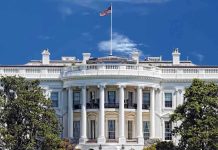
Executive power in the US is limited in the sense that it can’t get away with the same actions as some other forms of government. The president still holds great power, and while meant to serve the interest of the people, the federal government has had some hiccups along the way. Take, for example, Executive Order (EO) 6102, which forced Americans to hand their gold over to the federal government.
Section 1: Setting the Standard
The first section of EO 6102 defined the meaning of the word “hoarding” as withholding or withdrawing gold bullion, gold coins or gold certificates from trade channels both recognized and customary. This section also described a “person” as being an individual, association, corporation or partnership.
Section 2: Requiring a Transfer of Gold
The second section of the order required all holders to hand over or turn in any gold bullion, coins or certificates by May 1, 1933. This section also added that any of these items coming into a person’s possession on, or before April 28, 1933, be handed over to a Federal Reserve Bank or a branch within it. Exceptions to these requirements included:
- Coins and certificates that did not exceed $100 in value or coins that were recognized as having special value among collectors.
- Bullion and coins that were licensed for separate transactions including those imported for re-export or held due to a pending export license.
- Coins or bullion earmarked or held in trust by a foreign government recognized by the Bank for International Settlements, or a foreign central bank.
- Any amount of gold that was legitimate and customary in industrial use, art or profession within a reasonable time.
Section 3: Deadline
This section states that any gold bullion, coins or certificates that came into one’s ownership after April 28, 1933 should be treated the same as what is described in Section 2, within three days after it was received — unless the gold received met one or more of the exceptions listed in Section 2.
Section 4: Payment
Any gold bullion, certificates or coins received by the Federal Reserve were to be reimbursed with an equivalent value of coins or currency of the United States. To receive such payment, the gold received had to be in accordance with Sections 2 and 3.
Section 5: Banks
Section 5 required any and all gold received by member banks be turned over to the Federal Reserve within their respective districts. The Federal Reserve issued payments or credits as compensation for the gold. Again, any gold that applied to the exclusion list in Section 2 was exempt.
Section 6: Logistics
The Secretary of the Treasury paid transportation costs of the gold, within reason, out of the sum available to the president by Section 501 of the Act of May 9, 1933. Holders could add incident insurance and protection to the cost, but only when they provided sufficient evidence of their expenses.
Section 7: Time Extension
If the allotted time listed above was impossible to meet due to hardship or difficulty, the Secretary of the Treasury could extend the time in which the gold needed to be delivered. Any applications for these extensions had to be written under oath, addressed to the secretary and filed via a Federal Reserve Bank. Applications also had to include their desired dates for the extensions as well as locations and amounts of gold.
Section 8: Secretarial Power
The Secretary of the Treasury had the authority to further regulations to complete the actions within this order. They could also issue licenses in accordance with this order to carry out its purposes. Federal Banks were permitted to return an equal value of coin, currency or credit to deliver, hold or earmark trust gold coin or bullion to anyone showing the need for it as specified in exceptions 1, 3, and 4 of Section 2.
Section 9: Fines
Section 9 specifies that any person who willfully, or intentionally, violated this executive order could receive a fine of $10,000. Imprisonment of up to 10 years was also possible along with the potential to receive both punishments. Any officers, agents or directors found to be participating in any violations of this order could face the same punishments.
Could it Happen Again?
EO 6102 was part of an effort to help the banking system and to stimulate the economy, but many people resisted the idea of handing over their possessions. Some may even say this was the act of a tyrannical government. Right or wrong, there’s no changing what happened, and there’s no saying whether it will ever happen again.
The EO may have been necessary, but the move might also have been for selfish government gain. These types of actions are only possible when people allow them to occur. This may be one example where we can learn a valuable lesson from history, one we might hope not to repeat.













